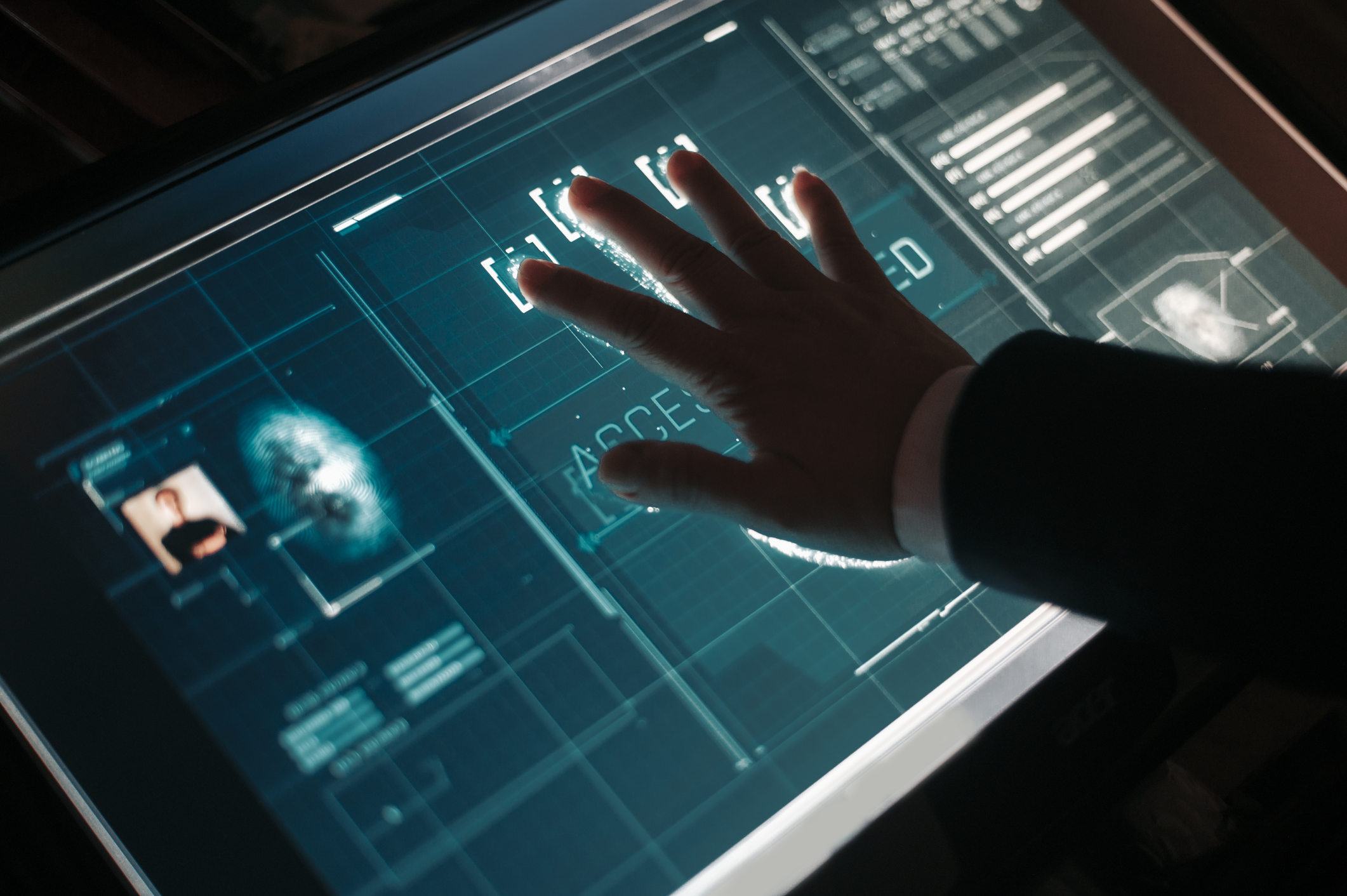Biometrics
Biometric authentication is a high-tech security process that relies on the unique biological characteristics of individuals to verify their actual identity. Biometric authentication systems compare physical or behavioral traits to stored, confirmed, authentic data in a database. If both samples of the biometric data match, authentication is confirmed. Typically, biometric authentication is used to manage access to physical and digital resources, such as buildings, secure areas, and computing devices.
Biometric identification uses biometrics, such as fingerprints or retina scans, to identify a person, whereas biometric authentication is the use of biometrics to verify people are who they claim to be.
Biometric authentication methods
While The Intelligence Group does not expect clients to be familiar with biometric identity nor authentication methods and devices, we endeavor to offer a full portfolio of options so that our clients can make educated choices about what technology would best serve their unique security needs. The following biometric identification and authentication devices are available and can be further explained during a face-to-face consult with The Intelligence Group:
- Chemical biometric devices
- DNA (deoxyribonucleic acid) matching uses genetic material to identify a person.
- Visual biometric devices
- Retina scans identify subjects by analyzing the pattern of blood vessels at the back of their eyes.
- Iris recognition uses a picture of the eye’s iris to identify people.
- Fingerprint scanning identifies people based on their fingerprints.
- Hand geometry recognition verifies identity or authorizes transactions using a mathematical representation of the unique characteristics of people's hands. This is done by measuring the distances between various parts of the hand, including finger length, finger breadth and the shape of the valleys between the knuckles.
- Facial recognition relies on the unique characteristics and patterns of people's faces to confirm their identity. The system identifies 80 nodal points on a human face, which make up numeric codes called faceprints.
- Ear authentication verifies identity based on users' unique ear shape.
- Signature recognition uses pattern recognition to identify individuals based on their handwritten signature.
- Vein or vascular scanners
- Finger vein ID identifies individuals based on the vein patterns in their finger.
- Behavioral identifiers
- Gait analyzes the way people walk.
- Typing recognition establishes people's identity based on their unique typing characteristics, including how fast they type.
Practical uses of biometric authentication?
Law enforcement
Law enforcement, state and federal agencies use different kinds of biometric data for identification purposes. These include fingerprints, facial features, iris patterns, voice samples, and DNA.
Access Control
Organizations around the globe are making their buildings more secure by combining physical security entrances with biometric devices, ensuring only the right people are able to enter. Utilized as a stand-alone or paired with a standard access control device, biometric devices provide an advanced method for uniquely identifying authorized users based on distinguished biological traits. Authorizing users based on these traits further mitigates the risk of unauthorized entry.
Travel
An electronic passport (e-passport) is the same size as a conventional passport and contains a microchip that stores the same biometric information as a conventional passport, including a digital photograph of the holder. A chip stores a digital image of the passport holder's photo, which is linked to the owner's name and other identifying information. The e-passport is issued electronically by a country issuing authority, which checks the identity of the applicant through fingerprints or other biometric information and confirms the data in the chip with the information provided by the applicant before issuing the passport.
Healthcare
Hospitals use biometrics to more accurately track patients and prevent mix-ups, while clinics and doctors' offices implement biometric authentication to keep their patients' information secure. Utilizing biometric data, hospitals can store, as well as access, a patient's medical history. This information can be used to ensure the right patient receives the right care, whether that means faster identification in emergency situations or preventing medical errors.
What are the advantages and disadvantages of biometric authentication?
Biometric authentication is both convenient and secure. Since biometric authentication uses unique characteristics for verification, they are difficult to replicate. Traditional methods, such as passwords or ID cards, are not as secure because they can be stolen or easily surmised.
While biometrics offer many advantages for particular industries, there are controversies surrounding its usage. For example, organizations may overlook the security of these data-driven security schemes. If bad actors capture biometric data when it is being transmitted to a central database, they can fraudulently replicate that data to perform another transaction. For example, by capturing an individual's fingerprint and using it to access a fingerprint-secured device, the bad actors could access sensitive data, such as private messages or financial information. Any solution we would employ would have end to end encryption to prevent interception of biometric data.
Another potential issue with biometric authentication is that, once a system has been implemented, an organization may be tempted to use the system for functions beyond its original intention, which is known as function creep. For example, a company may implement biometric technology for employee monitoring and management, but after a system has been installed and implemented, company management may find that it has the ability to track exactly where an employee has been within their facility.


